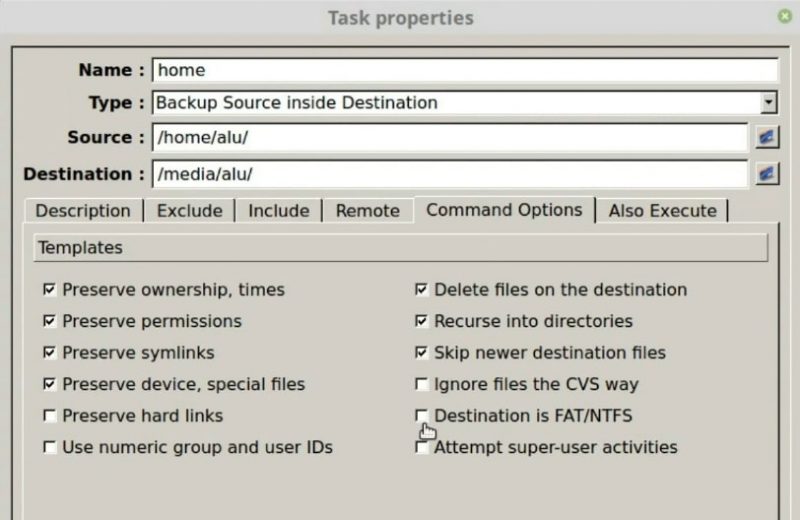

sudo rsync -avz -exclude 'dir3' source/ destination/. This is a really useful option if one of your filesystems is FAT formatted. If we don’t want to sync the dir3 and its subdirectories from the source to the destination folder, we use the rsync -exclude option as shown below.

The second type is backup or copy the selective files and. You can use this copy to bring the machine to its original state in case of any system failure. In the first type, we copy the entire Linux file system to an external device or a network share. rsync -ignore-existing -raz -progress /var/www 10.1.1.1:/var. By adding this, we eliminate behaviors 2 and 3 in the list above and all that is done is this: Any files that do not exist on the remote system are copied over. old to the backup files, i.e., file01.txt would be copied into, and then file01.txt would be updated with the new information. The latter makes rsync compare only sizes, and the former ignores mtime mismatches if they're within N seconds of each other. samba:samba/ sync: get put this allows me to sync with a CVS directory at the other end. Using Rsync, we can, backup entire system, or backup individual files and directories. Use the ignore-existing flag to prevent files from being copied over that already exist on the remote server. (Implicitly, don't skip anything, but the rule above prevents the default rule from ever happening.)įinally, the -prune-empty-directories keeps the first rule from making empty directories all over the place. You can add the '-modify-windowN' flag, or the '-ignore-times' flags, which sort of do what they sound.

rsync -zarv -prune-empty-dirs -include "*/" -include="*.sh" -exclude="*" "$from" "$to" the subdirectories of the source folder will be ignored so that will ignore. The algorithm quits once any pattern matchesĪlso, something ending with a slash is matching directories (like find -type d would). GRsync TransferSynchronize Files in Linux whats up guys its josh back with.Not matching any pattern means a file will be copied!.rsync gives us some statistics about our file transfer when we use the -P option, as shown in a previous example. This would have worked, because the file is being copied (or updated) to a remote system: rsync -av bigfile.zip remotehost: This will not use the 'delta' algorithm and. txt files with the following rsync command. Here's the important part from the man page:Īs the list of files/directories to transfer is built, rsync checks each name to be transferred against the list of include/exclude patterns in turn, and the first matching pattern is acted on: if it is an exclude pattern, then that file is skipped if it is an include pattern then that filename is not skipped if no matching pattern is found, then the filename is not skipped. The reason the entire file was copied is simply that the algorithm that handles block-level changes is disabled when copying between two directories on a local filesystem.


 0 kommentar(er)
0 kommentar(er)
